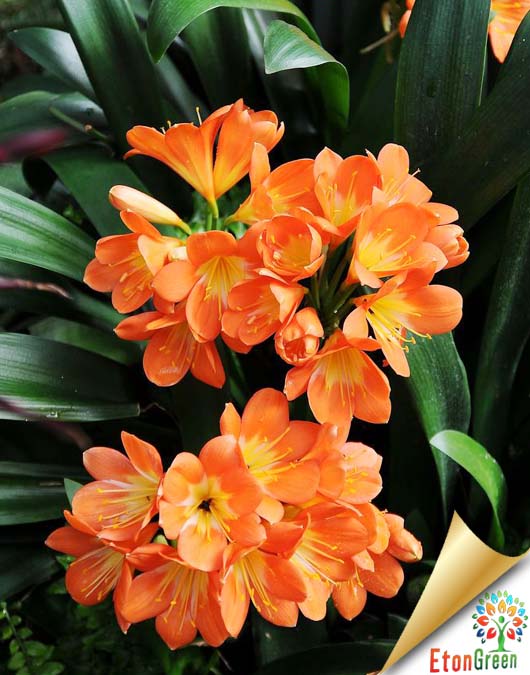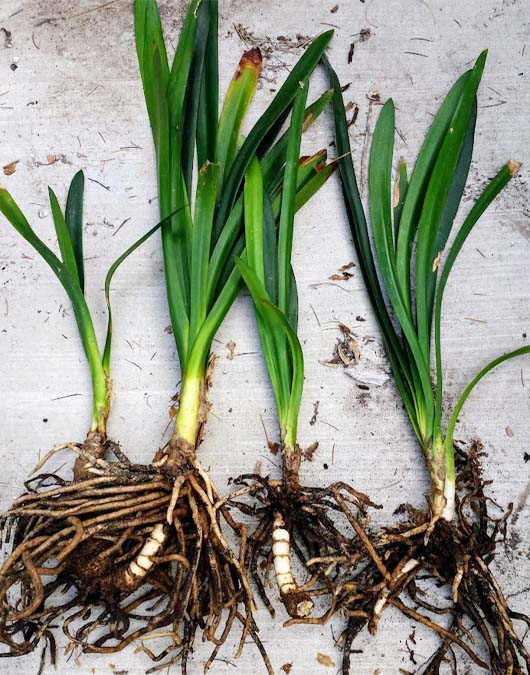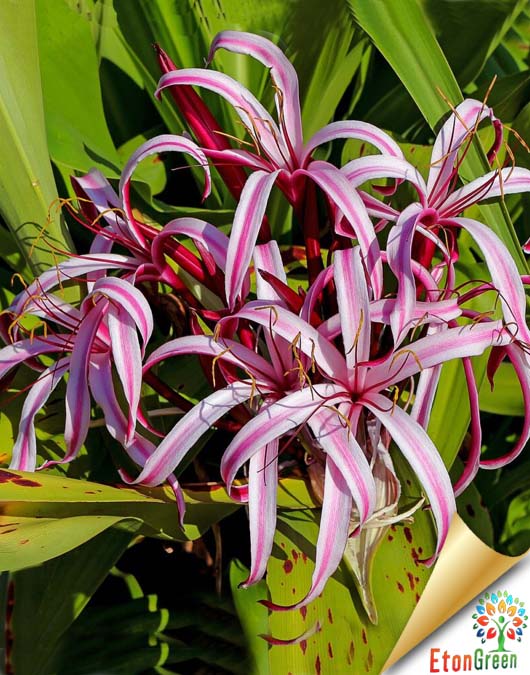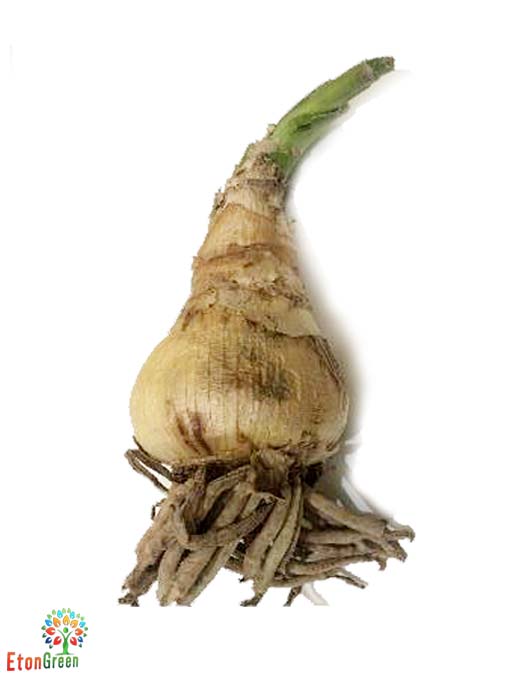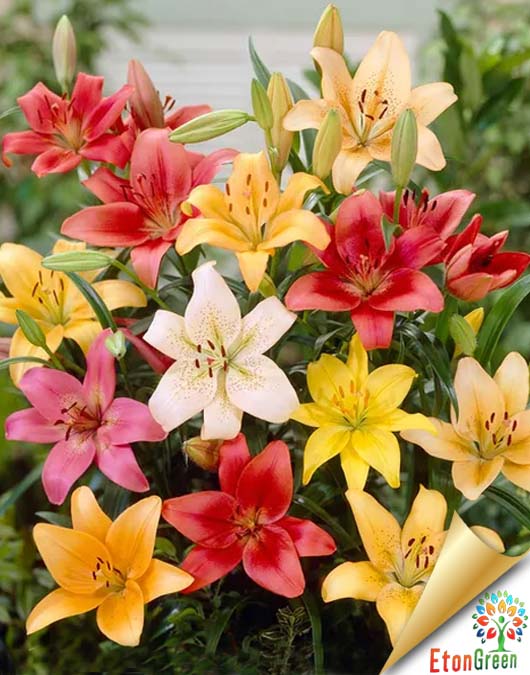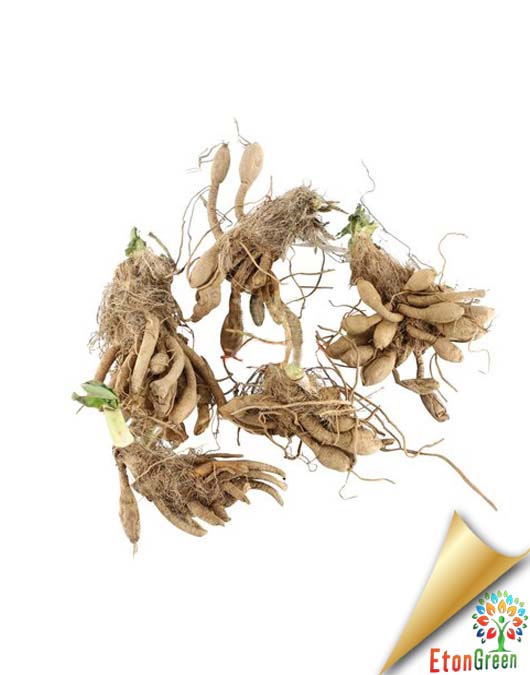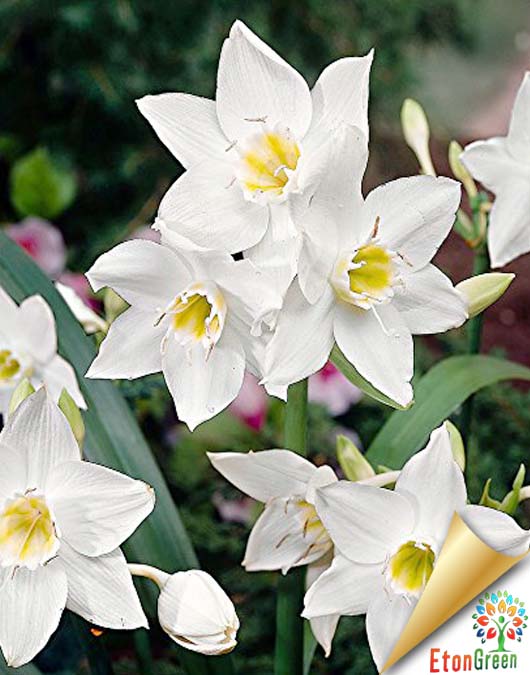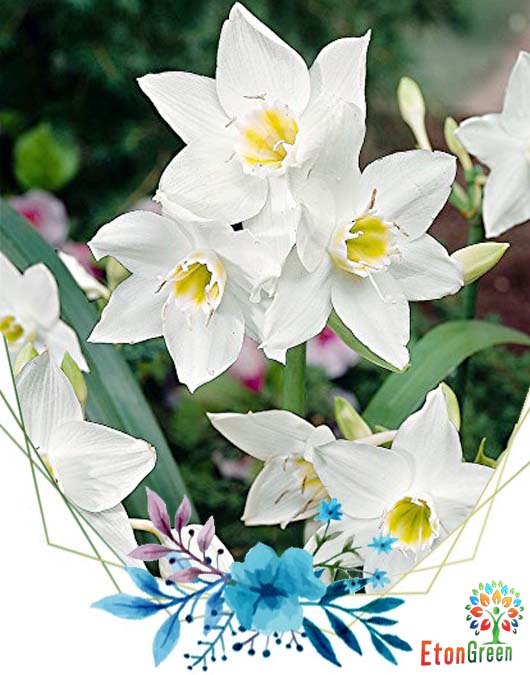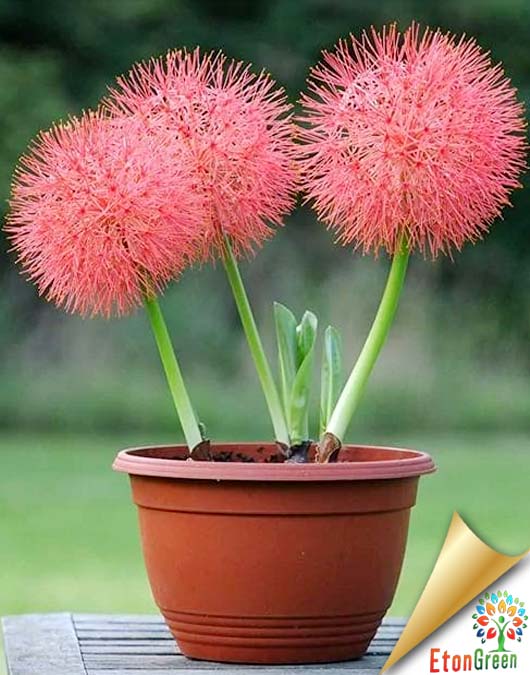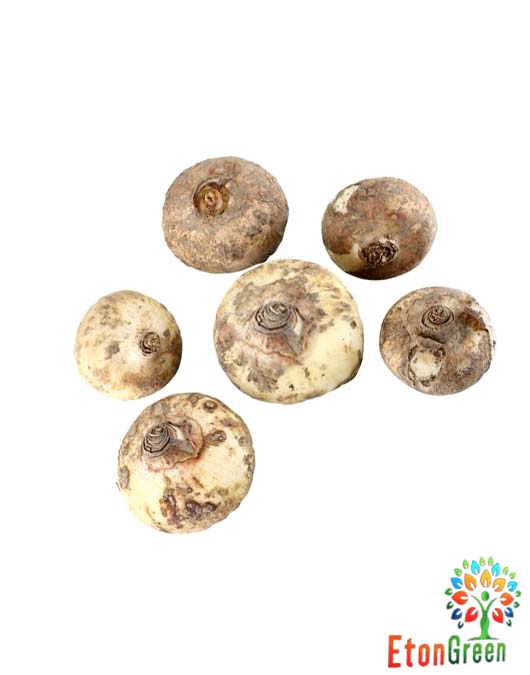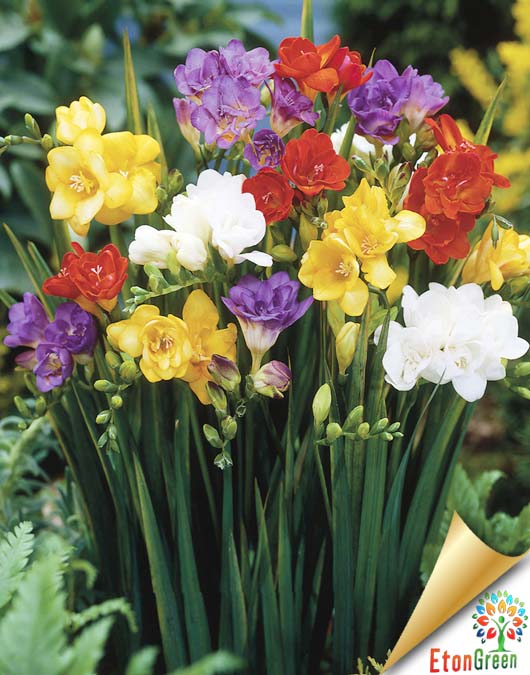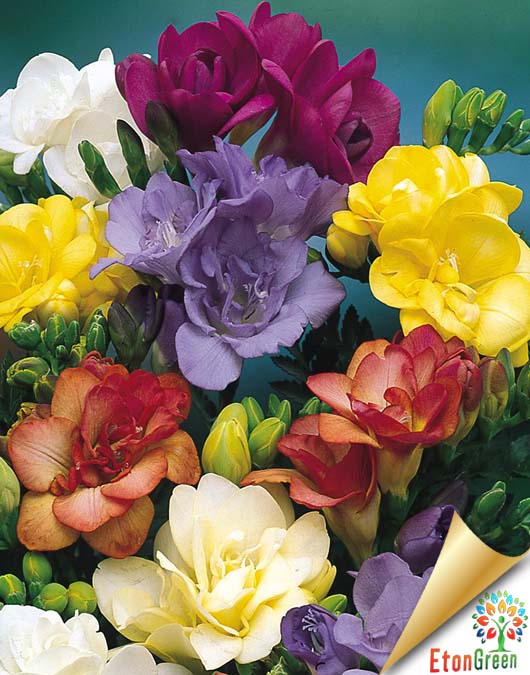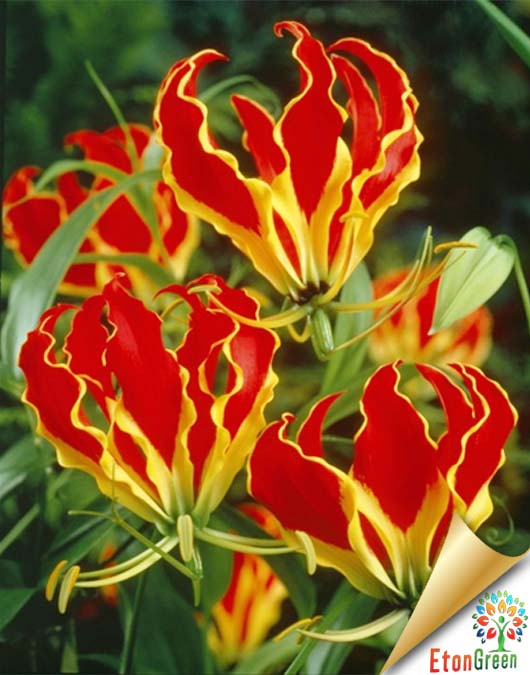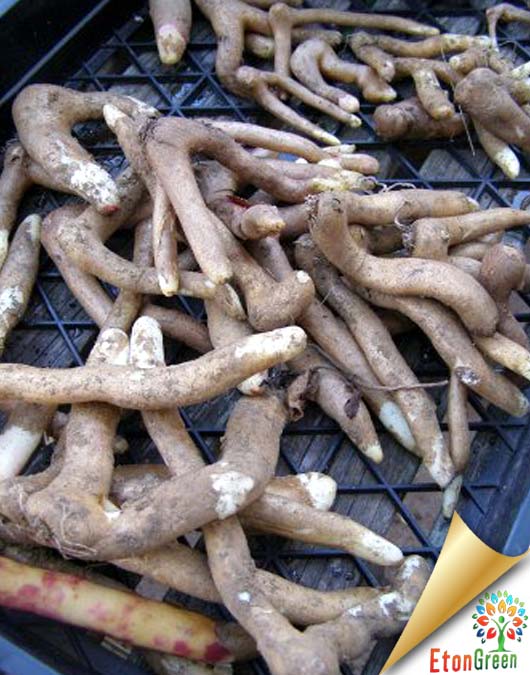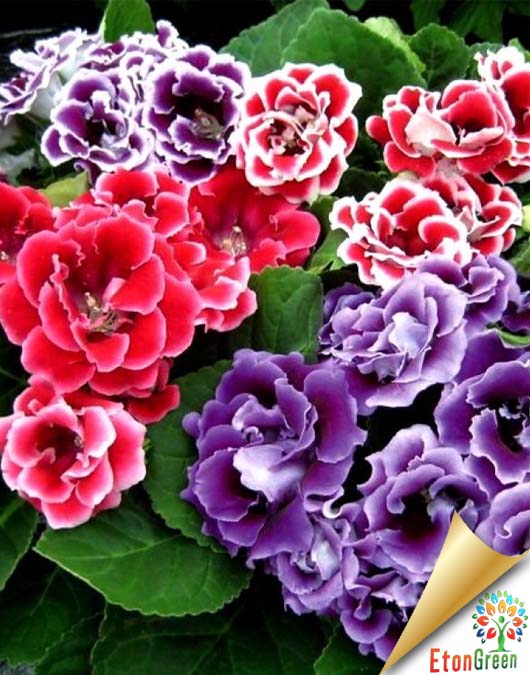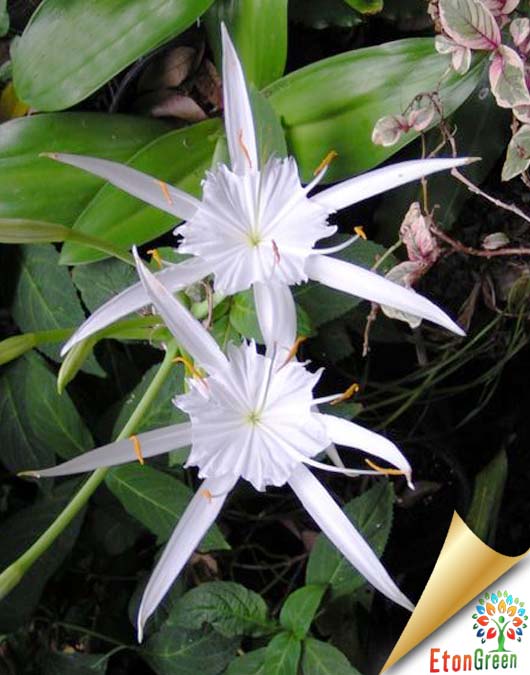- Shipping charge ₹ 90 for entire order
- Crinum lilies (Crinum spp.) are large, heat and moisture loving plants, producing an abundant array of showy flowers in summer.
- This crinum typically blooms in July, with slender-petaled, fragrant white flower that is highlighted with long, wine red stamens. They are unusual, looking like nothing else in the garden. Crinum leaves are basal, typically long and strap-shaped.
-
Planting And Care
- Protect from winter wet
- Generally disease and pest free
- In fall before the first frost, dig dry and store bulbs for winter in a cool, frost-free location in a medium such as peat or vermiculite that is given minimal moisture
Crinum Lily Care
- Plant 10 cm deep in any moderately fertile, moist but well-drained soil
- Bulbs should not sit in water, the soil should drain well
- Plant the large bulbs in full sun or filtered light in early spring
- Each bulb needs to be planted right side up
- The more pointed end is considered the top
- Plant each bulb in a hole that is just deep enough that its neck is protruding from the soil and the bottom of the bulb is covered in soil
- Covering the entire bulb with soil and planting too deep discourages flowering
- Space bulbs at least 8 inches apart and water the planting site or container well after planting
- Shipping charge ₹ 90 for entire order
- A daylily or day lily is a flowering plant in the genus Hemerocallis, a member of the family Asphodelaceae, subfamily Hemerocallidoideae. Despite the common name, it is not in fact a lily. Gardening enthusiasts and horticulturists have long bred daylily species for their attractive flowers.
- When it comes to plants that look simply stunning but are actually tough as nails, Daylilies are the first to come to mind! Also known as Hemerocallis, these happy bloomers are among the most popular and easiest perennial plants to grow in the sunny garden. Hardy throughout the country, Daylilies require minimal care to produce abundant blooms in a spectacular array of colors and forms
- Plant your Daylilies in the ground in well-draining soil or containers with adequate drainage holes. If you notice water puddles in your outdoor location 5–6 hours after a hard rain, scout out another site or amend the soil with organic material. Site your plants where they will receive full sunlight or light shade in warmer climates.
- Feel free to cut flowers while in bloom for bouquets and other arrangements, as this will not hurt the plants. While Daylily blooms last only a single day, choosing stems with several large buds will provide a few consecutive days of cut flowers.
- Allow your Daylilies to rest for a few months before beginning the next growing cycle.
- Mulch newly planted Daylilies to help manage freezing and thawing soils.
- Amend the soil with compost, finely ground bark, or decomposed manure to raise the level 2″–3″ to improve the drainage. Daylilies appreciate an average amount of moisture but will not survive in waterlogged soil.
- Plant immediately as Daylily roots will dry up if left out of the ground for too long.
- Expect new top growth to form just a few weeks after planting, with speed depending on the amount of available warmth and moisture.
- Shipping charge ₹ 90 for entire order
- Eucharis lily (Eucharis x grandiflora) is a graceful bulb that produces fragrant white flowers similar in shape to daffodils. It is native to South America which explains it’s other common name – the Amazon lily.
- A bulbous Amazon lily is a low growing bulb producing star-shaped clusters of white flower.
- Eucharis is a perennial with a bulb 2 to 6 cm in diameter. The stalked leaves are 20 to 55 cm long and 10 to 20 cm broad. Flowers are large, sweet-scented.
- It likes shade and sheltered areas and makes an excellent potted plant
- It can be planted in the garden
- Plant them with their necks slightly above the soil surface
- Plant in a normal potting compost and plant at 3 to 4 cm
- Propagations by offsets can be done in the spring
-
Sunlight Bright light, partial shade Watering Medium Soil Sandy loam soil, well-drained soil Temperature 15 to 30 degrees C Fertilizer Use any organic fertilizer Harvest Season Spring (Flower & Bulb)
Out Of Stock
EtonGreen Football Lily Pink Flower Bulbs (Set of 5)
- Shipping charge ₹ 90 for entire order
- Scadoxus multiflorus is the scientific name of football lily. This perennial grows from a rhizomatous bulb. It has a false stem as leaves are wrapped together. Leaves may appear after flowering or with them. A false stem can grow up to 60 cm.
- Football lily Bulb This name is a synonym of Scadoxus multiflorus (Martyn) Raf. Each plant will produce only one flowerhead in a season. Blood lily is a bulbous plant with leaves on short, speckled stalks. The flower stalk bears a rounded inflorescence, 8-12 cm across. The plant may live for many years and will flower annually indoors.
- Common Name- Football lily, blood lily, ball lily, blood flower, Katherine-wheel, oxtongue lily, poison root and powderpuff lily
- Scientific Name- Scadoxus multiflorus
- Watering- Medium
-
Caring for Haemanthus Multiflorus
- Pruning is generally not required, just remove the spent flowers.
- Bulbs may be planted outdoors directly in the garden in spring after last frost date.
- Reduce moisture in the winter season.
- Shipping charge ₹ 90 for entire order
- A wide range of colors and an alluring floral fragrance make freesia hard to resist. With up to eight trumpet-shaped, upward-pointing blossoms on leafless stems, freesias make delightful cut flowers that last a long time in the vase.
- The freesia bulb plant is easy to force indoors on sunny windowsills. Learning how to grow freesias in the garden and freesia flower care will allow you to enjoy these beauties year after year.
- Freesias bloom readily indoors. Plant the bulbs about 2 inches (5 cm.) apart in a pot filled with regular potting soil. Keep the soil moist, but not soggy, and place the pot in a sunny, preferably south-facing window. Expect flowers in 10 to 12 weeks.
- Once the flowers and foliage die back, allow the pot to dry out and place it in a cool location until you are ready to bring them into bloom again.
- Water well through the growing season but cut back during flowering time. Stop watering altogether once the foliage dies down and dries up. Do not over water because it will cause the corms to rot.
- Temperature: Keep Freesia refract plants in cool room with temperatures ranging between 16-18°C (60-65°F) and moderate humidity while they are growing and flowering. Blooms will last for weeks if kept at a maximum of 18°C (65°F). Freesia refract plants need a mild winter temperature of around 10°C (50°F).
- Fertilizer: A liquid fertilizer can be applied as soon as the first growth appears above ground.
- Shipping charge ₹ 90 for entire order
- Pick these easy-to-grow varieties for the best blooms. It is a rhizomatous herbaceous perennial plant, evergreen where rainfall and temperatures are adequate.
- It has large clumps of broad, arrow shaped dark green leaves up to 45 cm long.
- The inflorescences are large and are produced in spring, summer and autumn, with a pure white spathe up to 25 cm and a yellow spadix. The spadix produces a faint, sweet fragrance.
- Dig up the rhizomes in autumn, usually after the first frost and store for winter.
- Dig a hole about three times as deep as the height of the bulb.
- Set the bulb in the hole, pointy end up, then cover with soil and press firmly
- Space bulbs 8 to 10 inches apart
- Water thoroughly after planting
- Use the potting mix for bulb plantation as Garden soil + Compost + Perlite + Sand (2:2:1:1) Soil + Cocopeat + vermicomposting (2:1:2)
- Keep them adequately fertilized and watered, misting the plant every so often to keep the ambient humidity high
- They are susceptible to aphids so, take a look closely and apply insecticide.
- Shipping charge ₹ 90 for entire order
- Did you know that gloxinia can be grown as house plants? True! Gloxinia are fabulous gift plants AND can be spectacular house plants if you give them proper care.
- A few years ago, a gloxinia flowering houseplant (Sinningia speciosa) was considered a perennial. The plants would bloom and then die back. After a period of dormancy, the plant would regrow, delighting its owner with a fresh flush of big, velvety flowers.
- Todays gloxinias are hybrids that are bred to quickly produce a large number of blossoms. These gloxinias produce an outstanding display for about two months, but once the flowers fade, the plant rarely comes back because it invests all its energy into flowers rather than sturdy roots. Therefore, these plants are best grown as annuals, and since they are discarded after the bloom cycle, gloxinia flower care focuses on keeping the plant looking fresh while it is in bloom.
- Shipping charge ₹ 90 for entire order
- These hearty bulbs are easy to grow and require minimal care, provided that you plant them in the right place. At home in both formal and naturalistic settings, lilies also most take readily to contained.
-
they all make wonderful cut flowers! Daylilies are clump-forming perennials with arching, grass
like or straplines leaves. All the leaves arise from the base of the plant in two opposing ranks, resulting in a fan-like appearance.Common Name Tawny Daylily, Tiger Lily Height 2.5 to 3 feet Flower Color White color Bloom Time Summer Difficulty Level Easy to grow

